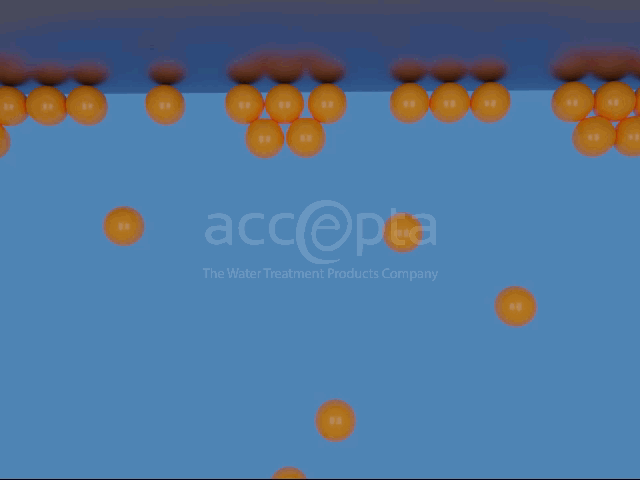Reducing Corrosion & Scale Risk in Closed Systems
There are multiple factors which can increase or decrease the risk of scale or corrosion within a closed water system most of which are briefly detailed below, summarised from BSRIA:
Corrosion factors:
- Dissolved Oxygen – most important factor to govern corrosion
- Dissolved Carbon Dioxide – can cause a reduction in pH
- pH – pH below 7 may see rapid corrosion (Aluminium corrosion can occur at high pH so treatment program should be limited to pH of 8.5)
- Temperature – higher temperatures tend to increase rates of corrosion
- TDS (Total Dissolved Solids) – high conductivity aids certain corrosion processes
- Galvanic – Aluminium & Copper corrosion due to ‘electrochemical potential difference’
- Sulphates – high levels can increase corrosion, additionally, sulphate ions may be consumed by SRBs (Sulphite Reducing Bacteria) to cause pitting
- Bacteria – risk of corrosion from aerobic & anaerobic bacteria
- Chloride attack – high levels can interfere with the development of protective oxide films on surfaces
- Flow Velocity – turbulent erosion on softer metals (low risk)
- Surface Condition – dirt & contamination may encourage localised corrosion
- Stress – stress-corrosion cracking
Note on Aluminium: Closed systems containing aluminium are considered high risk due to the potential for galvanic corrosion, the decision on chemical treatment should be carefully considered as it may require specific inhibitors and a higher than typical dosage to maintain adequate protection. Accepta recommends CB50, a Synergised Molybdate treatment for these systems, a link to this product page is listed in the table above.
Note on Hard Water: The permanent or temporary installation of a water softener may be required where the available water is quite hard and especially where there are lots of leaks as these can leave abrasive evaporation deposits & form scale. Please note, the make-up water should not be entirely softened as the total removal of calcium can make the water more corrosive. However, be aware an underused water softener may become a source of bacterial contamination and may not be ideally suited for applications where it’s sole purpose is the supply to the closed system.
The use of Scale & Corrosion inhibitors
A closed system inhibitor works by laying down a thin film over the surface of the system metal and should be chosen carefully taking into account suitability for all materials used within the system, a guide on Accepta products is available above by selecting ‘sort by system materials’. It is important that the recommended chemical reserve is maintained in the system to cover for a minor loss of water within the system, or general degradation and absorption of chemical within the heating system, the aim is to only require occasional chemical top-ups.
pH Control
pH is generally kept within a range of 8 – 11 to promote a less corrosive environment however as noted above systems with aluminium should be kept around 8.5 as the metal is known to corrode at higher pH levels. To lower the pH you can use a speciality acid such as Accepta’s pH Conditioner or if you need to raise the pH you can use a hydroxide alkalinity builder such as AKBD.
For more information and expert advice please contact us.
Accepta also recommends the advice offered in the BSRIA closed heating system guide which can be downloaded here.
Sizing Closed Water Systems
Heating Systems
Where capacities are not given for heating systems, allow eleven litres of capacity for every KW of boiler output (or 10,000 gallons for every 1.5 million BTU). These systems should be protected from corrosion and scale by the addition or Nitrite, Molybdate or Tannin inhibitors.
NB: Where boiler is providing heating for hot water as well, subtract this load from the calculation.
Chilled Systems
Chilled water system pipes are about 40% bigger than the same heating pipework and this can be used to estimate the capacity IF the pipework goes to the same locations (it may not). Chiller systems may operate below 0oC and should be prevented from freezing by the addition of glycol or other antifreeze solutions.
Estimating water loses and ongoing Dosage Rates
Each individual system will lose water at differing rates depending upon leaks. The losses from a small (<5000L) new system will be minimal, whereas a large, old system may lose 1% of its volume or more every week.
PTSA Fluorescence System Sizing
Where more accurate system sizing is required a PTSA Tracer such as ACCEPTA FTL-P can be used. This intert fluorescent tracer can be used to measure system volume with a photometer or probe capable of measuring PTSA in the range of 10 – 1000ppb.
Example
- PTSA value obtained after 24 hours circulation, following addition of 1 litre of ACCEPTA FTL-P is 125ppb
- 1000 ÷ 125 = 8
- System volume = 8m3
